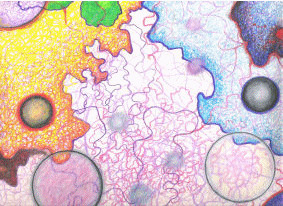1. Introduction to Drawing
Drawing is simply defined as the act of making a mark on a surface. The act has intention. Drawing is the act of making a mark on a surface with the intention of expressing something –
We can draw into the wet sand on a beach, onto a misted window, with mud-
Many of us “doodle”, drawing subconsciously as we focus on something else, suggesting this to be an act that is basic to human functioning. Since we first walked on this earth there has been an inclination to draw for its own sake or as a means to embody thoughts, feelings and emotions.




